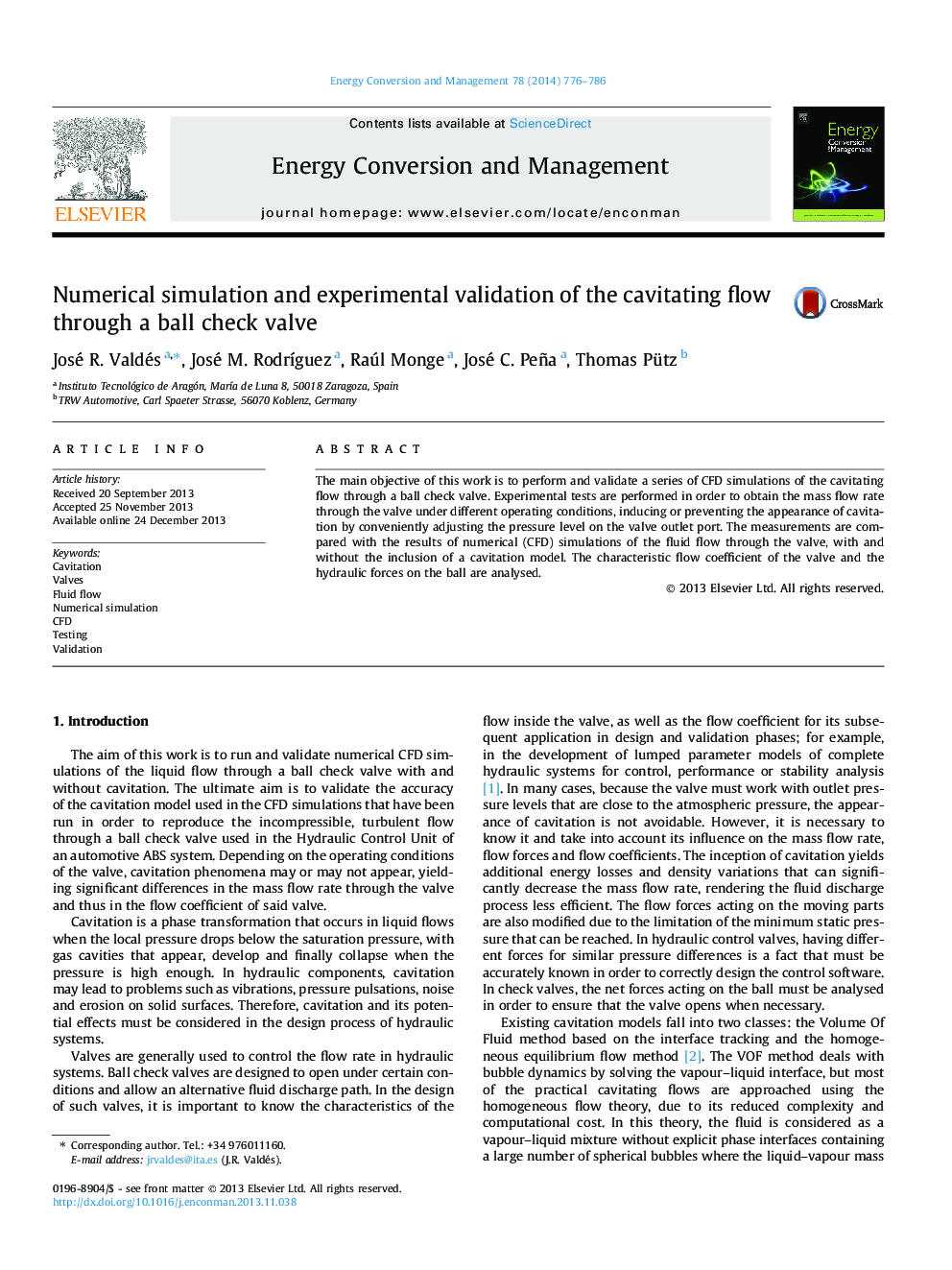| Article ID | Journal | Published Year | Pages | File Type |
|---|---|---|---|---|
| 764133 | Energy Conversion and Management | 2014 | 11 Pages |
•We perform experimental tests on a ball check valve with and without cavitation.•We run CFD simulations of the valve, with and without a cavitation model.•We compare the results, finding an excellent agreement in both cases.•We analyse the influence of cavitation on the mass flow rate.•We analyse the flow coefficient in both situations.
The main objective of this work is to perform and validate a series of CFD simulations of the cavitating flow through a ball check valve. Experimental tests are performed in order to obtain the mass flow rate through the valve under different operating conditions, inducing or preventing the appearance of cavitation by conveniently adjusting the pressure level on the valve outlet port. The measurements are compared with the results of numerical (CFD) simulations of the fluid flow through the valve, with and without the inclusion of a cavitation model. The characteristic flow coefficient of the valve and the hydraulic forces on the ball are analysed.
